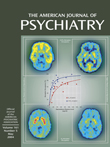Although lay readers are able to choose from among many excellent books concerning mental illness and mental health, few really good books have been available that adequately cover new information concerning the neurosciences, the brain, and brain diseases. Even the classic
The Broken Brain (1) deals primarily with mental illness. Now, the Dana Foundation has assembled a group of world-class editors and contributors, talented writers, and superb illustrators to offer a top-notch “primer” for the lay public interested in brainy matters.
Encyclopedic in scope, and starting with “How to Think About the Brain,” the 19 chapters offer synopses of normal and abnormal brain processes, including such provocative titles as “Basic Brain Care: Protecting Your Mental Capital,” followed by first-rate introductions to development; healthy brain processes; emotions and social functions; and learning, thinking, and remembering. Next we find sections dealing with developmental disorders, brain disorders affecting senses and body functions (including sleep disorders, seizures, and fatigue), infectious and autoimmune disorders, movement and muscle disorders, pain, nervous system injuries, and cognitive disorders. About 70 pages are allotted to psychiatric disorders (a section titled Emotional and Control Disorders). Each topic merits about 2–6 pages of text, and basic concepts are at least briefly reviewed. The book concludes with a helpful glossary, lists of medications used in the treatment of brain diseases, suggested readings, and resource lists of organizations confronting the different disorders.
Photographs, line drawings, and easy-to-access tables and figures abound, and the color illustrations are on a par with Frank Netta’s classics. Educators may want to prepare slides from many of the outstanding line drawings and cartoons. The writing is user friendly and should be easily grasped by anyone from advanced high school levels onward. Frequent sidebars summarize important points, including practical advice (e.g., “epilepsy safety measures,” “coping with blindness,” “how to manage your sleep disorder”). All laypeople with curiosity and/or a “need to know” about brains in general or particular brain disorders will be well served by these fine introductory presentations, and the volume would be an especially thoughtful gift for inquisitive, biological-science-minded students—perhaps a way to snare young minds (and their brains) into careers in psychiatry, neurology, and neuroscience. It could easily serve as a text for a lower-level introductory college-level course—instead of Abnormal Psychology, what about Abnormal Brains? However, because the book’s goal is to provide an introductory survey, readers wanting in-depth information on a specific topic will want to go to the suggested supplementary readings.
My concern is that too many people needing information about their own brains and those of others these days will head straight to the “net” and fail to take advantage of this high-quality resource, into which so many authorities have obviously put so much time and devoted effort. Should this volume be made available online?

